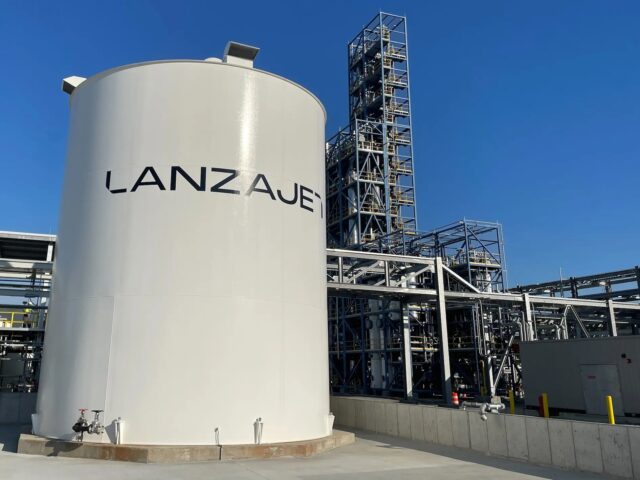Top 5 ekranoplans: Understanding WIG craft
October 15, 2024

Intersecting the boundary between flight and water-going vessel, the wing-in-ground-effect (WIG) concept seems to be making something of a renaissance since the inaugural ‘Caspian Sea Monster’ (also termed ‘ekranoplan’ in Soviet service) first skimmed the surface of the sea.
The International Maritime Organisation (IMO) defines WIGs as craft that “operate at low altitude above the sea surface but out of direct contact with that surface. Accordingly, their arrangement, engineering characteristics, design, construction and operation have a high degree of commonality with those characteristics of aircraft” – although regulatory restrictions and operational capabilities remain differentiated.
Distinctly different to ‘flying boats’ or amphibious aircraft, WIGs typically traverse the surface within one wingspan of the water in ground effect (‘flying’ on lift generated by the wing), with lower-speed options also offering the possibility to operate as a hydrofoil. However, if capable of sustained flight outside the influence of ground effect, IMO and the International Civil Aviation Organisation (ICAO) have also agreed that these craft should also be subject to the rules and regulations of the latter (as indeed any other aircraft would be).
1. Central Hydrofoil Design Bureau – Caspian Sea Monster

The dormant beast decaying on the shore of the southern Russian coastline is the mysterious and mighty ‘Lun-class’ ekranoplan (a name derived from the Russian words for ‘screen’ and ‘plane’). The first WIG craft worldwide, the concept was as revolutionary as it was bizarre when – in 1966 – the behemoth began operation with the Soviet Navy, following just two years of development work.
Carrying a total crew of 15 soliders, the ekranoplan (nicknamed the ‘Caspian Sea Monster’ for the water in which in operated) had a range of 1,200 nautical miles and a cruise speed of 297 knots, powered by ten Dobrynin RD-7 turbojets. With a length of 92m and a wingspan of 37.6m, the ekranoplan was the largest and heaviest aircraft in the word between 1966 and 1988, although only one was ever completed.
Although the ekranoplan thankfully never fired the six nuclear missile launchers along its spine, it was nevertheless a futuristic and inventive way of hunting submarines and moving troops at pace. However, with the only serviceable variant written off in a 1980 accident, the Caspian Sea Monster sunk to the depths before being ultimately resurrected and dragged to the shoreline in 2020 – a bizarre reminder of the WAG craft’s unconventional origins.
2. Antonov – An-2E experimental conversion

Continuing the former Soviet Union’s taste for unconventional aircraft, one Antonov An-2E (built as a standard single-engine, utility-use biplane) was later converted into an ekranoplan as a private project in the early 1970s.
Images would indicate the transformation retained the An-2’s traditional fixed undercarriage and standard Ash-612R radial engine, although no evidence as to it ever having actually flown is available – nor is information as to its proposed performance forthcoming.
3. Aron – M80

A contemporary concept, the Aron Flying Ship Company claims to have acquired the world’s first classification-certified WIG craft, with its Aron M80 having received the world’s first classification certification from the Korean Register of Shipping. Building on a 15 year research and development period, the company describes its M80 vessel as “an ideal platform to perform littoral [coastal] patrol, reconnaissance, and special operations due to its speed range and low RCS. It can substitute costly ASW helicopters or anti-submarine warfare missions in littoral water when equipped with a light dipping sonar”.
With a crew of up to eight, the M80 has a cruising speed of 97-107 knots and a range of up to 350 nautical miles, driven by the ubiquitous PWC PT6A-32 turboprop engine. It has been tested for over 180,000 km, states its developers. Unlike its contemporaries, which remain in ground effect, the M80 is also technically capable of flight – albeit at a maximum altitude of 150m.
4. ST Engineering – AirFish-8

The reverse delta / T-tail configuration of the AirFish-8 – slightly reminiscent of the inaugural Soviet ekranoplan design – is set to enter service in 2025, developed by Pelca / WigetWorks (which entered a joint venture with ST Engineering from July 2023). Powered by an unleaded petrol-powered V8 car engine, the craft promises a range of 300 nautical miles at a cruising speed of 80 knots.
Describing WIGs as “craft that can get you to your destination safely, swiftly, and more sustainably,” ST engineering adds: “These craft have lower operating costs and travel much faster than existing marine craft, making them ideal for tourism, transport, logistics and even maritime patrol in regions where infrastructure is limited”.
Following the maiden flight of a pre-production craft in 2016, extensive sea trials were conducted in the Netherlands and Australia in 2001, before subsequent sea trials progressed to Thailand and Singapore in 2007 and 2008 respectively. The first customer to place a letter of intent for the AirFish-8 (to enter commercial service as the ST Engineering AirX) is Eurasia Mobility Solutions, which will use the craft for tourism around Turkey.
5. REGENT – Viceroy seaglider

However, US developers REGENT (Regional Electric Ground Effect Nautical Transport) have eschewed traditional powerplants in future of electric propulsion options, with co-founder and CEO Billy Thalmeimer stating: “We’re moving more quickly than any other advanced electric mobility platform to create the world’s first passenger carrying seaglider”.
The 55ft long, 65ft wingspan Viceroy craft (employing hydrofoils for the takeoff run) is set to begin sea trials with humans by the end of 2024, following the receipt of regulatory approval from the US Coast Guard, with the company having commenced the hardware and systems integration of its full-scale prototype in October 2024.
REGENT claims the Viceroy will possess a 160 nautical mile range with existing battery technology (allegedly upgradeable to over 400 nautical miles with ‘next generation battery technology’) with a cruise speed of 160 knots. More than 600 orders for the Viceroy have been placed to date, with investors including Hawaiian Airlines and Japan Airlines. And if the likes of Colleen Rooney might one day embrace the seagoing craft’s potential for enabling luxury mobility, watch out for perhaps the best headline we’ve yet run: ‘WAGs on WIGs’.
















